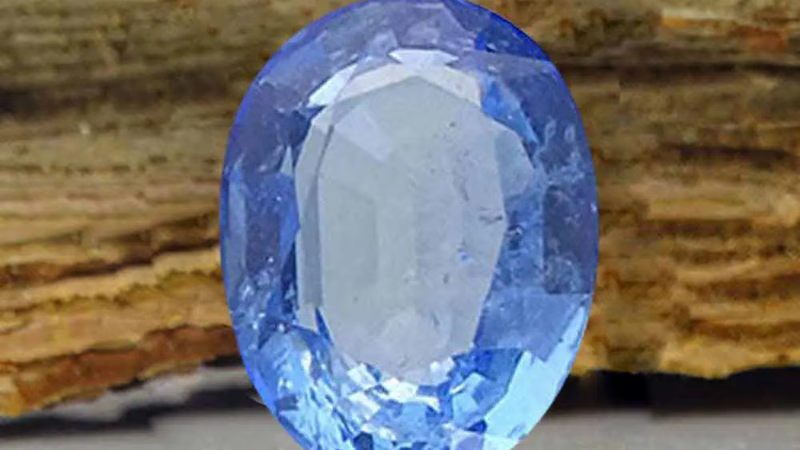
Topaz color enhancement techniques: irradiation and heat treatment.
Irradiation is a common treatment used to change or enhance the color of topaz. The gemstone is exposed to high-energy radiation, typically in the form of gamma rays or electrons. This process can transform colorless or pale topaz into shades of blue, from light sky blue to deep Swiss blue. Irradiation can also be used to produce golden or orange hues in yellow topaz. Heat treatment is another method used to alter the color of topaz. Heating the gemstone at specific temperatures can remove color zoning or modify the existing color. Heat treatment is often used to produce pink topaz from pale or colorless crystals.
Coating is a temporary treatment used to create certain effects or enhance the color of topaz. A thin layer of colored film or vapor is applied to the gemstone's surface, which can alter its appearance. Coatings can create iridescent or rainbow-like colors on the surface of topaz. It's important to note that treated topaz should always be disclosed and clearly identified when sold. Gemstone professionals and reputable jewelers should provide accurate information about any treatments applied to the gemstone.
Additionally, it's worth mentioning that natural topaz, without any color enhancement treatments, is also highly valued in its pure form. The natural color variations of topaz, such as the golden hues of imperial topaz or the vibrant blue of certain varieties, are cherished by many collectors and jewelry enthusiasts.
- Heating: The purpose of this work is to create a pink (in nature rare) color from stones that are yellow, orange, or brown. This color change is durable and does not change color. It is impossible to detect.
- Irradiation: The purpose of this method is to produce dark blue topaz rocks because in nature this mineral is found in pale blue. This color change is as durable as the above method and its color does not change, it is usually indistinguishable.
- Diffusing color on the surface of the stone (Diffusion): The purpose of this method is to produce different colors such as red, green, and blue. It is not durable because the color can be detected on the surface of the stone.
- Surface coating: The purpose of this method is to produce rainbow colors for fire topaz. This method is not durable and can be detected by scratching the surface of the stone.
Stones that look like topaz are artificial sapphire, blue glass, artificial spinel. Sometimes, topaz is mistaken with stones such as citrine, aquamarine, tourmaline, brown quartz (smoky quartz). It is sometimes observed that citrine is sold as Brazilian topaz! Note that when quartz stone is heated, it can change color and produce imitation green, yellow and other colors and hear it in the market as the original and natural topaz. Golden topaz is usually more expensive and it is better to buy natural topaz. A famous jewel called Braganza weighing in at 1.640 carats was thought to be a large, unique diamond. But later it turned out to be a colorless topaz!
The colorless topaz gemstones that are mined to turn blue come mainly from Nigeria and Sri Lanka. More than 99% of today's blue topazes are the result of heating a colorless species. There is no” super” or " Swiss” blue garlic in nature. These gemstones first turn brown by coloring into colorless topaz and then become a stable blue color by heat. It is interesting to know that brown topaz loses a significant amount of its color under sunlight. The color of most pink species is created by heat treatment of” cherry” colored stones and they are called “Pinked or Fired Topaz”. The colorless type can be by method Aqua Aura (Gold vapor deposition to coat the green-blue).
-
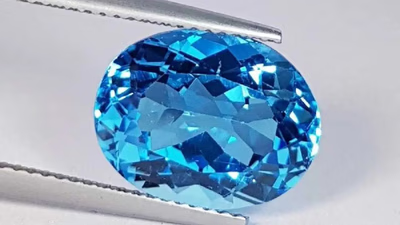
Topaz is a versatile gemstone available in various colors, each with unique properties. Blue topaz, often created through irradiation, is popular for its vibrant hues but is not found naturally. Yellow topaz, abundant and known for its clarity, ranges from pale to deep golden shades. The GIA color grading system categorizes topaz from colorless to black, with several shades including white, golden, pink, champagne, imperial, and magic topaz. White topaz is pure and colorless, while golden topaz includes yellow and orange tones. Pink topaz is rare and typically treated to enhance its color. Champagne topaz features natural brown shades without chemical enhancement. Imperial topaz showcases light peach to dark orange colors and is highly valued.
Magic topaz displays multiple colors due to chemical treatment and is also expensive. Each variety of topaz has distinct characteristics that influence its market value and desirability in jewelry.
-
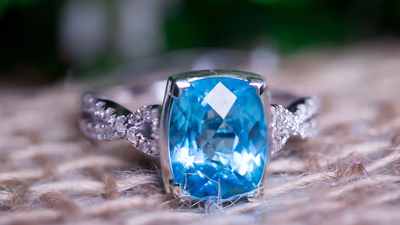
Color, clarity, and cut are the primary factors determining topaz quality. The intensity and saturation of color significantly influence desirability, with vibrant blue and pure pink being highly sought after. Clarity is assessed by the presence of inclusions and blemishes; topaz with minimal flaws is more valuable. Certain varieties, like imperial topaz, may have inclusions that enhance their appeal. Treatments such as irradiation or heat can alter color and clarity, impacting value; untreated stones are generally preferred. The cut of a topaz gemstone affects its brilliance and overall aesthetic, with common shapes including emerald, pear, and oval. While larger stones are rarer and often more valuable, exceptional smaller stones can also command high prices based on their quality attributes. Buyers should consider both the visual appeal and the craftsmanship of the cut when selecting topaz.
-
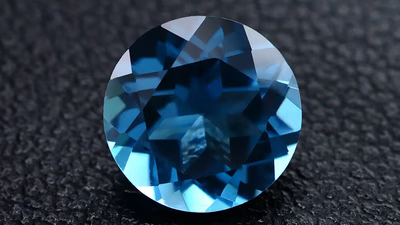
Topaz gemstones should be stored separately to avoid scratches and damage. Use small jewelry bags or soft cloth pouches for individual stones. Exposure to chemicals, such as household cleaners and perfumes, can dull the gemstone"s luster or cause discoloration. Extreme heat and rapid temperature changes can lead to fractures, so it"s essential to keep topaz away from direct sunlight and heat sources. Topaz is a semi-precious stone available in various colors, including light milky shades, gold, yellow, red, and blue. Historically regarded as a symbol of love and affection, topaz is often used in jewelry like necklaces, bracelets, and earrings. To clean topaz, use a solution of hot water and soap with a soft brush or cloth; avoid harsh chemicals or ultrasonic cleaners that may damage the stone. Regular professional cleaning by a jeweler is recommended to maintain its brilliance.
-
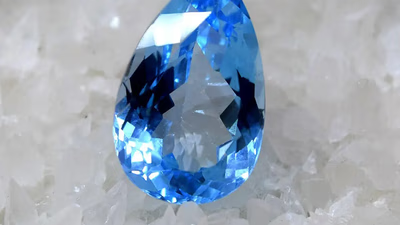
Topaz is mined in various regions worldwide, with Brazil leading in production, particularly in Minas Gerais. The country offers a spectrum of colors, including blue, pink, and yellow. Russia"s Ural Mountains are another significant source, known for high-quality topaz in colorless and pale hues. Nigeria"s Jos Plateau is recognized for its intense blue topaz, while Pakistan"s Shigar Valley produces notable pink varieties. Other countries like Namibia and Mexico also contribute to the global topaz market, with Namibia known for vibrant blue stones and Mexico for a range of colors associated with other gemstones. Sri Lanka and Australia have historical significance in topaz mining as well. The mineral forms in mountainous areas through volcanic activity and is often found alongside other gemstones. When purchasing topaz, factors such as color, cut, and clarity are essential to consider to ensure quality. "
-

Irradiation and heat treatment are primary methods for enhancing topaz color. Irradiation uses high-energy radiation to transform colorless or pale topaz into various shades of blue, while heat treatment alters yellow, orange, or brown stones into durable pink hues. Coating is a temporary method that applies a colored film to the surface, creating effects like iridescence but is not long-lasting. It"s crucial for sellers to disclose any treatments applied to topaz, as natural variations are also highly valued. The article highlights the importance of recognizing treated versus untreated stones and notes that many blue topazes on the market are heat-treated colorless varieties from Nigeria and Sri Lanka. Additionally, it warns against confusion with other gemstones like citrine and aquamarine, which can be misrepresented as topaz. The rarity of natural pink topaz and the value of golden topaz are also discussed, emphasizing the need for informed purchasing decisions. "





